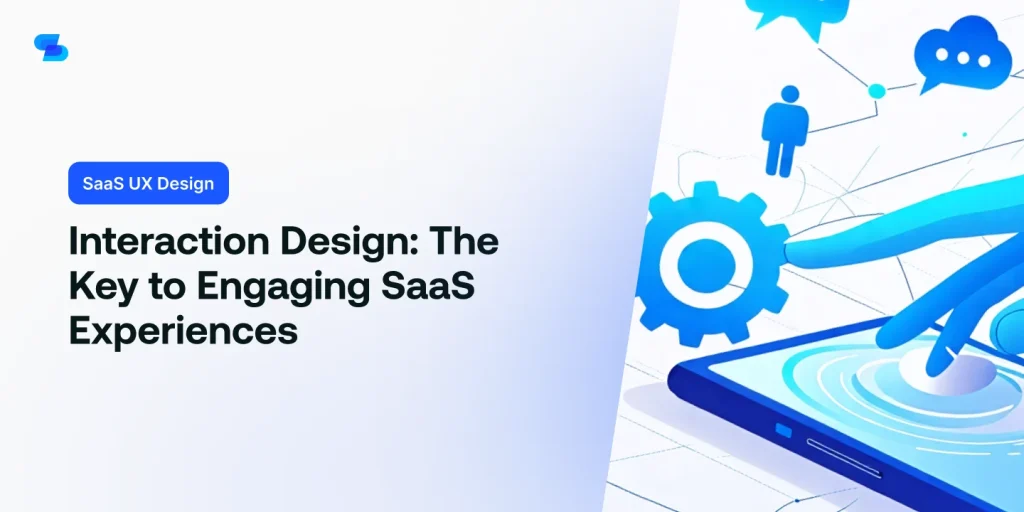You’re likely aware that a mediocre SaaS experience can lead to frustrated users, low engagement, and lost revenue. However, you might not know that intentional interaction design can be the secret to creating an addictive and loyal user base. By understanding user behavior patterns, crafting intuitive navigation systems, and designing for delightful feedback, you can set the stage for a seamless onboarding experience. Micro-interactions, human-centered design principles, and metrics-driven success measures can further enhance user engagement. As you explore the complexities of interaction design, you’ll uncover the strategies that can elevate your SaaS experience and drive user loyalty – and the best part is, you’re just getting started.
1. Understanding User Behavior Patterns
When designing SaaS experiences, you need to explore the intricacies of user behavior patterns to create an intuitive and user-friendly interface that meets their needs and expectations. Understanding user behavior is vital to crafting an engaging experience.
You can achieve this by analyzing behavioral analytics, which provides insights into how users interact with your platform. By segmenting your users, you can identify patterns and tailor your design to specific groups. Engagement metrics, such as click-through rates and time spent on a page, help you measure the effectiveness of your design.
Usability testing is another essential step in understanding user behavior, as it reveals pain points and areas for improvement. Be mindful of cognitive load and decision fatigue, which can lead to user frustration.
By mapping user journeys and prioritizing tasks, you can streamline the experience and motivate users to achieve their goals. Understanding motivation factors, such as rewards and recognition, can also drive user engagement.
2. Crafting Intuitive Navigation Systems
As you’ve gained insights into user behavior, you can now apply this knowledge to design an intuitive navigation system that guides users seamlessly through your SaaS platform. A well-structured navigation hierarchy is essential to help users find what they need quickly and efficiently. By organizing your navigation into logical categories and subcategories, you can reduce cognitive load and make it easy for users to navigate your platform.
To create an effective navigation system, you need to understand your user personas and their goals. What are they trying to achieve on your platform? What tasks do they need to perform? By understanding their needs and behaviors, you can design a navigation system that meets their expectations.
For instance, if your users are frequent visitors, you can provide shortcuts to their most-used features. If they’re new users, you can offer guided tours or tutorials to help them get started. By putting your users at the center of your design process, you can create a navigation system that’s intuitive, user-friendly, and engaging.
3. Designing for Delightful Feedback
You’re likely familiar with the frustration of clicking a button or submitting a form, only to be left wondering if your action was successful or not. This uncertainty can lead to anxiety and a negative user experience.
That’s why designing for delightful feedback is essential in SaaS applications. When you interact with an interface, you expect some form of response, and that’s where visual feedback comes in. A simple loading animation, a checkmark, or a brief message can go a long way in providing assurance that your action was successful.
Additionally, incorporating sensory engagement through subtle sound effects or haptic feedback can further enhance the experience. The goal is to create an emotional connection with the user, making them feel confident and in control.
4. Building Seamless Onboarding Experiences
Crafting a seamless onboarding experience is essential, since it sets the tone for a user’s entire journey with your SaaS application. You want to make a great first impression, don’t you? A well-designed onboarding process helps users understand the value of your application, builds trust, and increases the likelihood of long-term engagement.
To achieve this, you need to identify the most critical steps in the onboarding process and prioritize them. This is where onboarding metrics come into play. By tracking metrics such as time-to-first-value, feature adoption rates, and user retention, you can pinpoint areas that need improvement.
As you design the onboarding experience, put yourself in your users’ shoes. Imagine their user journey, from signing up to becoming a power user. Break down the process into manageable chunks, and provide clear guidance and feedback along the way.
Make sure the experience is intuitive, visually appealing, and free of friction points. By doing so, you’ll be well on your way to creating an onboarding experience that sets your users up for success and keeps them coming back for more.
5. The Power of Micro-Interactions Design
As you craft your SaaS experience, you’re probably wondering how to make it truly memorable.
That’s where micro-interactions come in – they can create delightful surprise moments, guide users through seamless task flows, and even forge emotional connection points.
Delightful Surprise Moments
Micro-interactions, those subtle animations and responses, can transform a mundane SaaS experience into a memorable one, leaving users with a lasting sense of delight.
You’ve likely experienced them before – a loading animation that’s so engaging you don’t mind waiting, or a satisfying ‘ding’ when you complete a task. These delightful surprise moments are the result of thoughtful micro-interactions design. They’re the cherry on top of your SaaS experience, making you feel seen and appreciated.
When you encounter an unexpected interaction, it’s like finding a little present. It’s a reminder that the designers behind the product care about your experience and are willing to go the extra mile to make it enjoyable.
These moments can be as simple as a button that changes color when you hover over it or a progress bar that fills up with a fun animation. They may seem insignificant, but they add up to create a sense of wonder and excitement.
Seamless Task Flows
When you’re fully engaged in a task, the last thing you want is to be slowed down by clunky workflows or confusing interfaces, which is where seamless task flows come in.
Seamless task flows leverage the power of micro-interactions design to guide you effortlessly through even the most complex processes. By breaking down tasks into manageable chunks, you’ll experience a sense of flow, with each step logically leading to the next.
This is achieved through careful consideration of user feedback, gathered through usability testing, to identify and eliminate any stumbling blocks. Task automation also plays a significant role, taking care of repetitive tasks and minimizing cognitive load, allowing you to focus on high-level thinking.
Micro-interactions design guarantees that every interaction is intuitive, with subtle animations and changes that provide instant feedback, keeping you informed and in control.
As a result, you’ll complete tasks efficiently, with a sense of accomplishment and satisfaction.
Emotional Connection Points
By incorporating subtle yet powerful emotional connection points, you’ll experience a deeper sense of engagement and attachment to the SaaS experience, fostering a lasting bond between you and the product. These micro-interactions can evoke emotions, creating an unforgettable user experience. For instance, when you achieve a milestone or complete a challenging task, a celebratory animation or a motivational message can trigger a sense of accomplishment, boosting your confidence and motivation.
To create a more personal connection, designers can use emotional triggers that tap into user storytelling. By understanding your goals, values, and pain points, they can craft an experience that resonates with you on a deeper level. For example, a personalized onboarding process that acknowledges your struggles and offers tailored solutions can make you feel seen and understood.
As you interact with the product, these emotional connection points can accumulate, fostering a sense of ownership and loyalty. By leveraging the power of micro-interactions design, you’ll develop a lasting emotional bond with the SaaS experience, driving long-term engagement and retention.
6. Human-Centered Design Principles
As you design your SaaS experience, you’ll want to focus on creating an emotional connection with your users.
To do this, you’ll need to put their needs first and design with empathy.
Design for Emotion
You craft meaningful SaaS experiences by deliberately evoking emotions that drive user engagement and loyalty. This is where design for emotion comes in – a vital aspect of human-centered design principles.
By understanding what motivates and resonates with your users, you can create an emotional connection that fosters long-term relationships. To do this, you need to identify emotional triggers that influence user behavior. These triggers can be as simple as a sense of accomplishment or as complex as a feeling of belonging.
By incorporating design empathy, you can put yourself in your users’ shoes and craft experiences that acknowledge and validate their emotions.
For instance, a well-designed onboarding process can evoke feelings of excitement and anticipation, setting the tone for a positive user experience. Conversely, a frustrating experience can lead to anxiety and abandonment.
User Needs First
Emotional connections are built when SaaS experiences meet users’ underlying needs, which is why human-centered design principles prioritize user needs first. By putting users at the forefront, you’ll create experiences that truly resonate with them.
Start by developing user personas to understand their goals, behaviors, and motivations. Conduct usability testing to identify pain points and areas for improvement. Ascertain your design meets accessibility standards, making it inclusive for all users.
Map the user journey to understand their tasks and pain points. Perform task analysis to break down complex tasks into manageable chunks. Then, iterate on your design, gathering feedback through usability testing and feedback loops.
This process helps reduce cognitive load, allowing users to focus on their goals. By prioritizing user needs, you’ll increase user satisfaction and loyalty. Scenario mapping can help you visualize user experiences, identifying opportunities to delight and surprise them.
7. Measuring Interaction Design Success
Measuring the success of interaction design in SaaS experiences requires establishing clear, actionable metrics that tie directly to business goals and user outcomes. You can’t just rely on intuition or anecdotal evidence; you need concrete data to back up your design decisions.
To get started, define key interaction metrics that matter most to your business, such as time-to-onboard, feature adoption rates, or user retention. Then, conduct usability testing to identify pain points and areas for improvement. This will give you a baseline to measure against and help you prioritize design initiatives.
As you iterate on your design, continue to track and analyze these metrics to see how they’re impacting user behavior and business outcomes. Are users completing tasks more efficiently? Are they more likely to upgrade to a premium plan?
By tying your interaction design efforts to tangible results, you’ll be able to demonstrate the value of your work to stakeholders and make a stronger case for continued investment in design.
Final Thoughts
You’ve now got a solid grasp of the essential elements that make up exceptional interaction design for SaaS experiences.
By understanding user behavior patterns, crafting intuitive navigation, designing for delightful feedback, and building seamless onboarding, you’ll be well on your way to creating engaging experiences that drive user adoption and loyalty.
Remember to incorporate micro-interactions, human-centered design principles, and metrics to measure success.
With these strategies in place, you’ll be primed to deliver SaaS experiences that truly resonate with your users.

